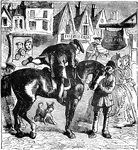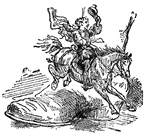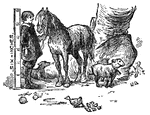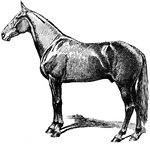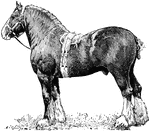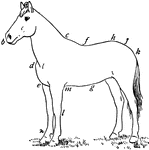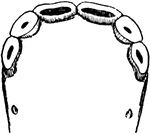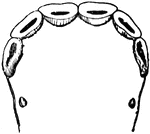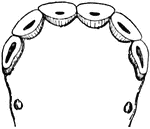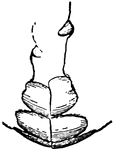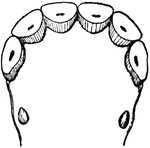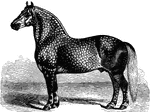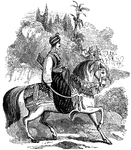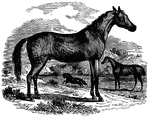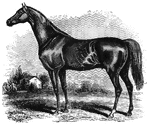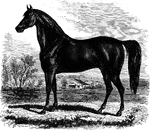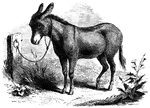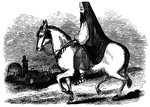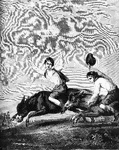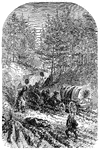
Federal Baggage Train
"Federal baggage train on its way to the army at Falmouth, VA., December, 1862. Our illustration represents…

Campaign in Kentucky
"The campaign in Kentucky, Federal troops under General Johnston, advancing on the Louisville and Nashville…
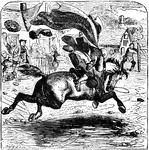
John Gilpin
Gilpin on his horse. "The wind did blow, the cloak did fly, Like streamer long and gray. Till, loop…

Confederate Cavalry
"Confederate cavalry driving stragglers and skulkers back to their duty at the Battle of Antietam. One…

John Gilpin
Gilpin speaks to his horse. "I am in haste to dine; 'Twas for your pleasure you came here, You shall…

Battle of New Berne
"Battle of New Berne- Lieutenant Hammond capturing Colonel Avery, of South Carolina, while he was endeavoring…
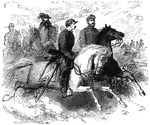
Federal Cavalry Leaders
"Federal Cavalry Leaders. Generals Pleasonton, Bayard and Colonel Percy Wyndham making a reconnoissance,…
Hundred Mile Prairie
"Camp life in the West. During one of the pauses in the active part of the Missouri campaign our special…

War in Virginia
"The War in Virginia. Capture of three Confederate guns, near Culpepper, by General Custer's cavalry…

Horseshoeing
"Horseshoeing in the army. Not like the country blacksmith, by the highroad upon the skirt of the village,…
!["The war in Virginia- contrabands coming into the Federal camp. The [African American] furnishes, in his various phases of existence, wonderful studies for the artist and philosopher. Never, perhaps, has a race seen such a moment as during the Civil War, when the chains of bondage were breaking from the limbs of 4,000,000 of men. The distant roar of battle was to them a sound of deliverance. With all the uncouth, odd and queer manifestations of joy they prepared to reach the camp of the delivering Yanks. Yoking together most incongruous teams before the farm wagons of their fled masters, with ass and ox and horse, with household gear queerly assorted, with useless truck and little that could rarely serve them, they started for the Promised Land, and might often have been seen coming in as our artist, a most close student of nature, depicted them, with his usual felicity of portraiture."— Frank Leslie, 1896](https://etc.usf.edu/clipart/11700/11752/contrabands_11752_mth.gif)
Contrabands
"The war in Virginia- contrabands coming into the Federal camp. The [African American] furnishes, in…
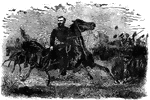
General Sheridan
"Major General Sheridan riding along the lines after the Battle of Fisher's Hills, Va., September 22nd,…

Man and Child on Horseback
In the land of giants, Gulliver is carried in a box by his master on a market-day to a neighboring town.

Manure Spreader
A manure spreader in operation. The manure was pitched from the stable to the spreader, handled only…
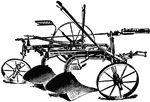
Four-Horse Gang Plow
A four-horse gang plow. One man can plow nearly as fast as two ment with two-horse plows.

Iron Age horse Cultivator
An Iron Age horse cultivator, good for working crops which require a horse cultivator. The levers can…

Turkey Buzzards
Genus Cathartes, found in the Americas, sometimes as far north as New England. These buzzards…

Gnu
"The Gnu has a formidable pair of horns, leading first downward and then pulling upward, and has been…
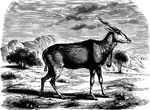
Eland
"Is considerably the largest of all the antilopes, being the size of a good horse, and measuring eight…

Ten Broeck
"The fastest race horse in the world. His best time, May 24, 1877, was 1.39 for one mile." — S. G.…
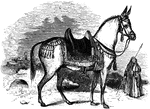
Abyssinian Mule
"The mule is in fact an exceedingly hardy, strong, and useful animals. In all mountain countries, for…
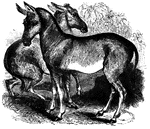
Hemiones
"In this the fur is short, smooth, and bright red bay; the legs are straw color; there is a broad, longitudinal…
